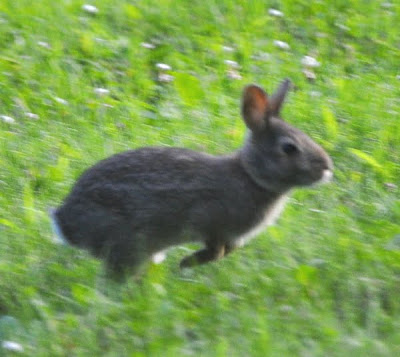
All Photos by Cheryl Cavert
PART 2 FROM CHERYL CAVERT ON KAY, JAY, AND YOUNG KAT OF TULSA
Hi Donegal,
When I went by the nest later in the afternoon (Saturday, May 30th), Kat was sitting much more quietly, mouth open, trying to stay in a shady spot as the temperature and humidity soared. I checked back later in the evening and found Kat across the street on top of an apartment building (2 stories) as Kay watched from the nesting tower. As it got dark, Kat flew into a tree close by the nesting tower as Kay headed off to her own roosting spot.
My first stop the next morning was by the nesting tower - and Kat was again perched on top of the nearby apartment building while Kay and Jay watched from the nesting tower. Kat flew off while I was watching Kay and Jay and I was not able to locate her the rest of the day.
While I was out of town, a couple of other Tulsa hawkwatchers provided some much appreciated on the ground reports. A few days before I returned, they wondered if Kat had fledged as sometimes when they were by the nest, they could not see her. I am not certain she had already fledged at that time - just based on my observations of the 48 hours leading up to me actually seeing her away from the nest. Depending on where Kat chose to perch on the tower, often times it was hard to spot her especially if her back was towards you. Also, over those 2 days, I only saw her running/hopping/flapping around the nesting level platforms, never gaining more than a foot or two of air. And once she did fledge, when I have seen her back at the nesting tower, she is all over the different perches and levels. In conclusion, we are not sure when Kat actually fledged!
to be continued.....
--cheryl


PART 3

Part 3
Even though I refer to Kat as a her, of course we are clueless as to whether it is a he or she. Depending on the angle of my photos, I can just never be sure of the size of the ankles/feet or beak. My guess right now would be he.
I did not see Kat anymore the rest of the day. We had storms that night so I headed back to the nesting tower the next morning. Kay and Jay were both perched there but no Kat. About 15 minutes later, she showed up, loudly announcing her hunger. Kay and Jay ignored her for a bit but then Kay took off and returned with a stick for the nest. Kat just stayed perched on an upright over the nest, folded over looking in the nest for tidbits, calling out loudly. Jay finally took off but when he had not returned in an hour, Kay went out herself. At that point, Kat did change positions, taking up her call from another upright. Kay returned for a bit but then took off again. I waited 2 1/2 hours but neither parent showed up during that time with food and Kat continued to call out.
When I checked later in the day, Kat was perched at the nesting tower and looked like she had eaten . The next two days when I was by, I would see Kat perched somewhere on the tower. I wondered if she was hanging around closer, afraid she might have to wait a long time for a meal again?!



PART 4

I've enclosed a view of Kay and Jay's nesting towers taken from a couple of miles away. The KJRH tower that they nested at the previous two years is on the right while the new nest at the Mazzio's tower is at the left - by far the two tallest "trees" in the area.
Usually, in the evenings especially, I see Jay watching from the KJRH tower, but a few days ago in the evening he was perched at the top of the nesting tower. Following the sounds of loud mockingbirds, I located Kat across the street in a pecan tree (one of Kay's favorites for nesting material). She flew back by the nesting tower with a bird close on her tail. She briefly perched in another tree - it was a hot evening - and then flew back to the pecan tree as it provided better shade.
A couple of days ago on a very windy day, I watched Kat learn to deal with wind while perched on an upright by the nest. A few times she would be so busy watching other things high in the sky (maybe Kay or Jay? I could not see anything!) that a gust of wind would about knock her off the perch and she would have to stretch out her wings and struggle back to an upright position. Finally bored with that, she started hopping/flying between uprights, getting a feel for the strong wind gusts. After a bit of that, she stretched out her wings, made a few adjustments and took off! I was able to follow some of her flight by watching for flocks of surprised birds rising out of the treetops as Kat circled around, occasionally coming into view between the tops of the trees, terrorizing all the neighborhood birds!




All my best,
Cheryl




















